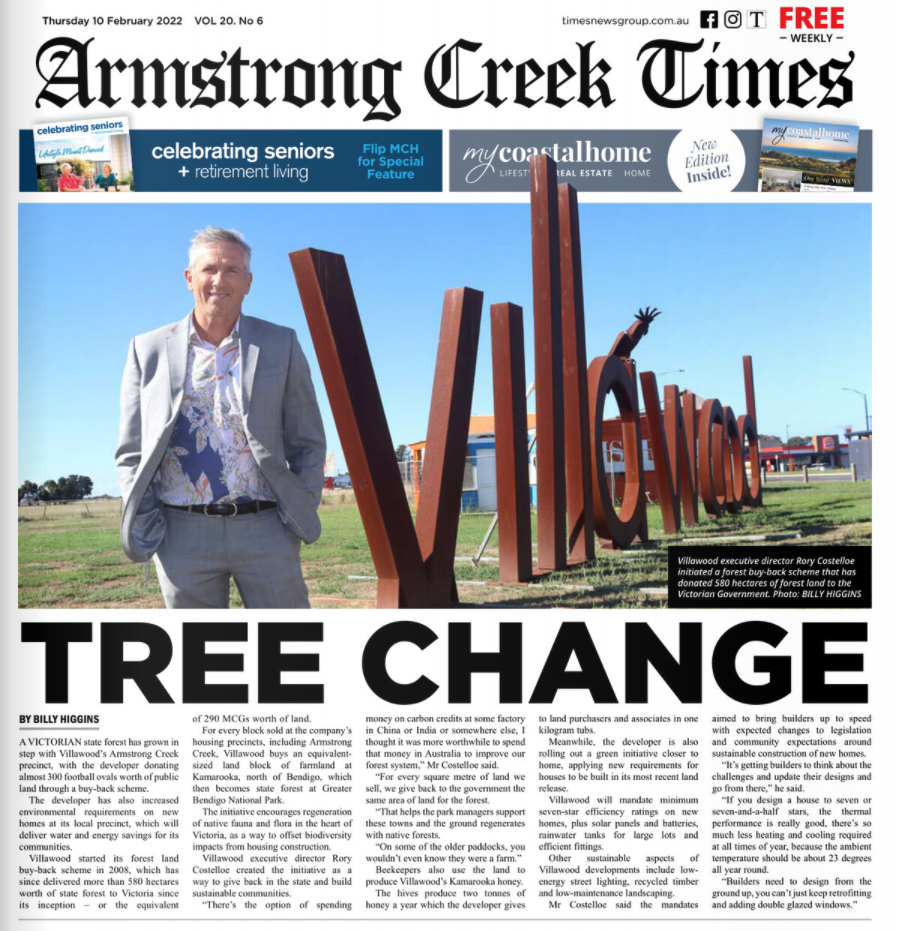Tree Change

A Victorian state forest has grown in step with Villawood’s Armstrong Creek precinct, with the developer donating almost 300 football ovals worth of public land through a buy-back scheme.
The developer has also increased environmental requirements on new homes at its local precinct, which will deliver water and energy savings for its communities.
Villawood started its forest land buy-back scheme in 2008, which has since delivered more than 580 hectares worth of state forest to Victoria since its inception – or the equivalent of 290 MCGs worth of land.
For every block sold at the company’s housing precincts, including Armstrong Creek, Villawood buys an equivalent sized land block of farmland at Kamarooka, north of Bendigo, which then becomes state forest at Greater Bendigo National Park.
The initiative encourages regeneration of native fauna and flora in the heart of Victoria, as a way to offset biodiversity impacts from housing construction.
Villawood executive director Rory Costelloe created the initiative as a way to give back in the state and build sustainable communities.
“There’s the option of spending money on carbon credits at some factory in China or India or somewhere else, I thought it was more worthwhile to spend that money in Australia to improve our forest system,” Mr Costelloe said.
“For every square metre of land we sell, we give back to the government the same area of land for the forest.
“That helps the park managers support these towns and the ground regenerates with native forests. “On some of the older paddocks, you wouldn’t even know they were a farm.” Beekeepers also use the land to produce Villawood’s Kamarooka honey. The hives produce two tonnes of honey a year which the developer gives to land purchasers and associates in one kilogram tubs.
Meanwhile, the developer is also rolling out a green initiative closer to home, applying new requirements for houses to be built in its most recent land release.
Villawood will mandate minimum seven-star efficiency ratings on new homes, plus solar panels and batteries, rainwater tanks for large lots and efficient fittings.
Other sustainable aspects of Villawood developments include low energy street lighting, recycled timber and low-maintenance landscaping.
Mr Costelloe said the mandates aimed to bring builders up to speed with expected changes to legislation and community expectations around sustainable construction of new homes. “It’s getting builders to think about the challenges and update their designs and go from there,” he said.
“If you design a house to seven or seven-and-a-half stars, the thermal performance is really good, there’s so much less heating and cooling required at all times of year, because the ambient temperature should be about 23 degrees all year round.
“Builders need to design from the ground up, you can’t just keep retrofitting and adding double glazed windows.”
Originally Published in Armstrong Creek Times 10/02/22